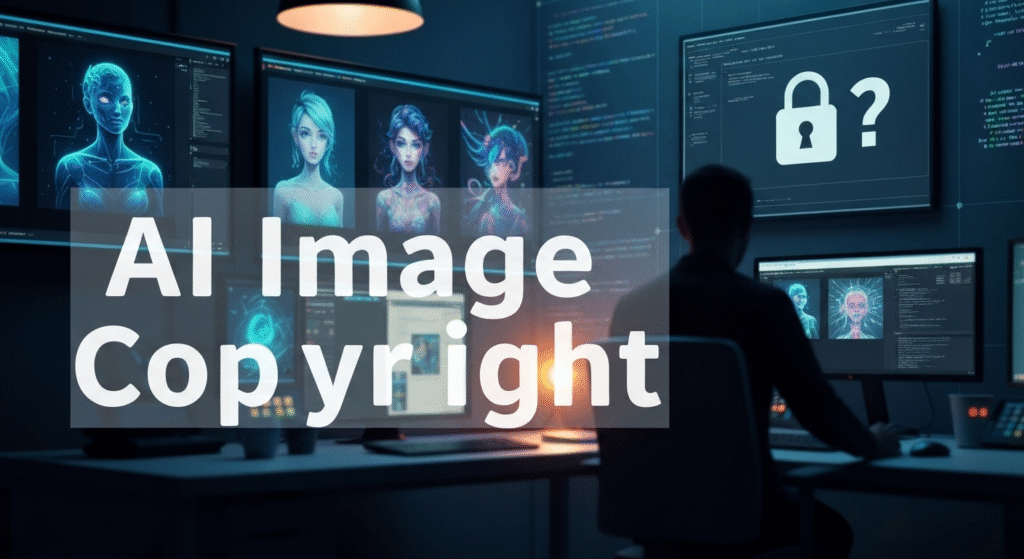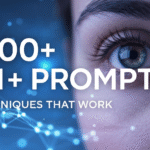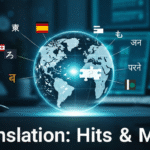It felt like magic. I typed a few descriptive phrases—”a wise old owl wearing spectacles, reading a book by candlelight, digital art”—and within seconds, a stunningly detailed image appeared on my screen. It was exactly what I had envisioned for my latest blog post. The excitement was immediate, but it was quickly followed by a nagging, uncomfortable question: Can I actually use this? A wave of uncertainty washed over me. Who owned this image? Me? The AI company? No one? That moment of hesitation sent me down a rabbit hole, and what I found was a confusing, evolving, and absolutely critical landscape for any modern creator.
For years, I’ve been exploring the intersection of artificial intelligence and creativity. My interest isn’t rooted in a formal legal degree but in a deep-seated curiosity about how these groundbreaking tools are changing our work. After spending the better part of five years using these technologies and writing about them, I’ve learned that the most powerful AI tools are only as good as our understanding of how to use them responsibly. This isn’t legal advice—I’m not a lawyer—but rather a chronicle of my journey to answer these tough questions for myself. I’m sharing my research, my frustrations, and the practical framework I built to navigate it all.
The Starting Point: When Excitement Meets Confusion
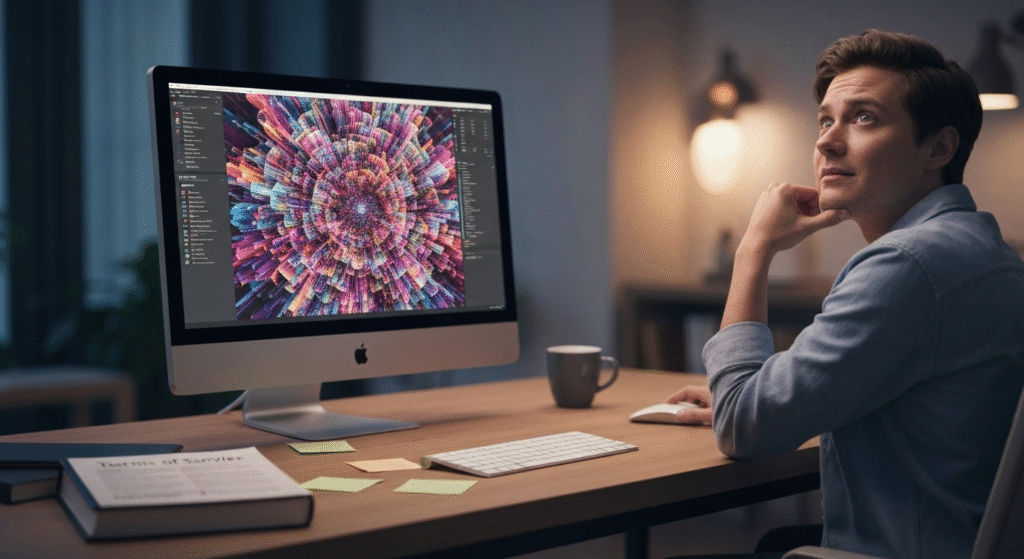
My initial dive into AI image generation was pure fun. I created fantastical landscapes, quirky characters, and abstract art. But the moment I wanted to use an image professionally—on a blog, in a presentation, or for a social media graphic—the fun stopped and the anxiety began. The core of the problem is that the technology moved much faster than the rules that govern it. We have push-button access to incredible creative power, but the instruction manual on ownership and rights is still being written.
The first place I looked for answers was in the Terms of Service (ToS) for the various tools I was using. This was my first major realization: there is no single rule. Every platform has its own approach to intellectual property. Some services stated that I, the user, owned the images I created and could use them for commercial purposes. Others had more complex licensing agreements, granting me rights but also retaining some for themselves. A few were built on open-source models where the output was often considered public domain or fell under very permissive licenses. It became clear that blindly generating an image without reading the fine print was like building a house on a foundation I couldn’t see.
The Big Question: Who Counts as the “Author”?
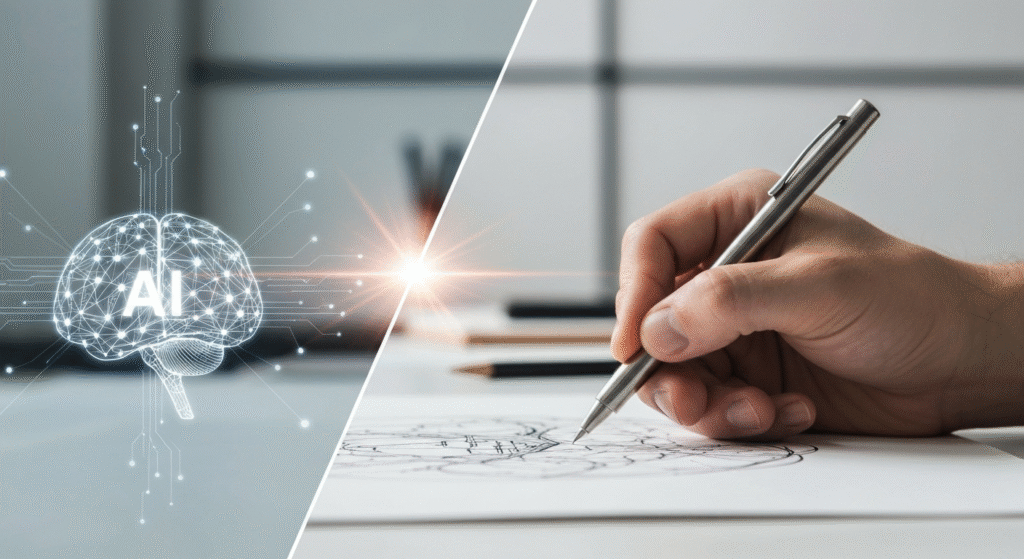
As I dug deeper, I realized the central conflict boiled down to one word: authorship. In the eyes of copyright law, authorship has traditionally been a fundamentally human act. It requires creative expression and input from a person. So, where does that leave AI? Is the person who writes the prompt the author? Or is the AI, which constructed the image pixel by pixel, the author?
This is where the research led me to the U.S. Copyright Office (USCO), a key authority on this subject. Their stance has been evolving, but a consistent theme has emerged. According to guidance released by the USCO, works created solely by an autonomous AI system, without any creative input or intervention from a human, cannot be copyrighted. The reasoning is simple: there is no human author. They famously referenced a case where a monkey took a selfie, and the courts ruled the monkey couldn’t own the copyright. The same logic is being applied to AI.
But here’s the thing—it’s rarely that simple. What if the prompt I write is incredibly detailed, specific, and poetic? What if I generate multiple images and composite them together in a photo editor, adjusting colors, adding elements, and creating a new piece of art? This is the crucial gray area: the element of human creativity. The USCO has clarified that works containing AI-generated material can be copyrighted if a human has contributed a sufficient amount of original creative expression. This means the human’s contribution must be more than just a simple command. The creative spark must still come from a person.
This completely changed my perspective. I stopped seeing the AI as a magic creator and started seeing it for what it is: an incredibly sophisticated tool, much like a camera or a paintbrush. A photographer uses a camera to capture an image, but their choices about composition, lighting, and timing are what make the photo a piece of copyrightable art. In the same way, my role as a creator using AI is to guide, refine, and transform the output into something that reflects my own vision.
My Practical Framework for Using AI Images Responsibly
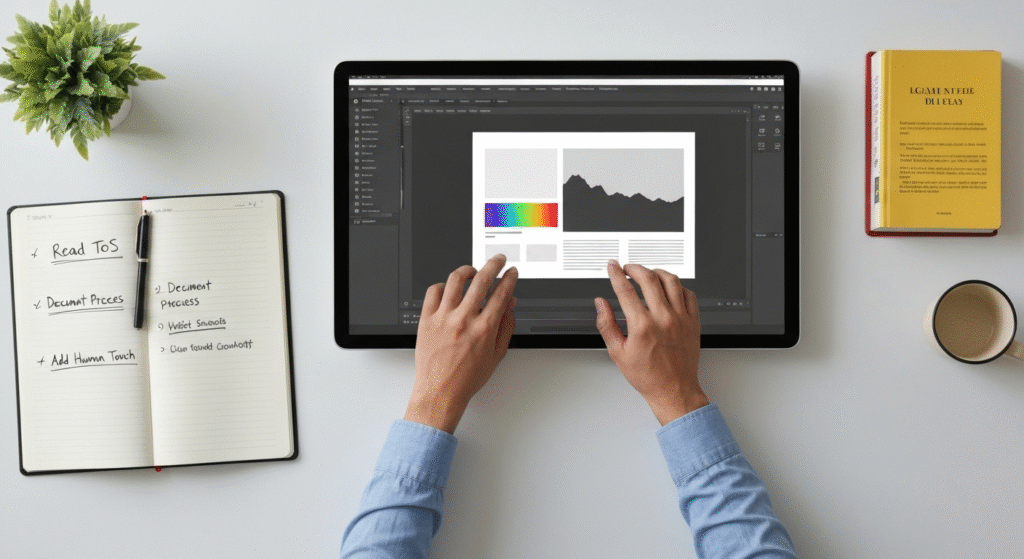
After weeks of reading legal blogs, official documents, and user agreements, I felt I had enough information to build a personal workflow. My goal wasn’t to find legal loopholes but to create a system that felt ethical, transparent, and safe for my work. This is the four-step process I landed on, which I use every time I generate an image for a project.
Step 1: Read and Understand the Terms of Service (ToS)
This is the non-negotiable first step. Before I even start generating, I find the platform’s policy on intellectual property. I’m looking for answers to these specific questions:
- Who owns the output? Does the license grant me full ownership, or is it a limited license to use the image?
- Are there commercial use restrictions? Can I use the images on a monetized blog, in marketing materials, or on products?
- Does the company retain any rights? Some platforms grant themselves a license to use, reproduce, and display the content you create on their platform.
- What are the rules about attribution? Is credit required or simply recommended?
To make this easier, I started keeping a simple chart to compare the policies of the tools I use most often.
| Policy Question | Platform Type A (e.g., Midjourney Model) | Platform Type B (e.g., Stable Diffusion Model) | Platform Type C (e.g., DALL-E Model) |
| Ownership | User generally owns the assets they create (with some exceptions). | Often open-source; depends on the specific interface used. Many outputs are public domain (CC0). | User is granted full rights to use, sell, and merchandise the images they create. |
| Commercial Use | Generally permitted for paid users. | Generally permitted, very few restrictions. | Explicitly permitted. |
| Company Rights | The company retains a broad license to use your prompts and images. | The open-source model itself has no rights. The platform you use might. | The company may use content to improve its services. |
| Attribution | Not strictly required, but often encouraged by the community. | Not required, as many outputs are treated as public domain. | Not required. |
Note: This table represents general policies which can change. Always check the current Terms of Service for any tool you use.
Step 2: Document My Creative Process
If human authorship is the key to copyright, then I decided I needed to be able to prove my creative involvement. For every image I plan to use, I now keep a simple record that includes:
- The AI tool and model version used.
- The exact final prompt, as well as 2-3 earlier versions to show my refinement process.
- The date the image was generated.
- A brief note on how I intend to use the image.
This documentation serves as a log of my creative journey. It shows that I didn’t just type “a picture of an owl” but instead made a series of deliberate creative choices to arrive at the final product.
Step 3: The Human Touch – Editing and Modification
I now make it a rule to never use a raw AI-generated image directly in an important project. I always bring the image into a design or photo-editing program to add my own layer of creativity. This serves two purposes: it allows me to better match the image to my brand’s aesthetic, and it strengthens the case for human authorship.
My modifications can be simple or complex:
- Cropping and Composition: Changing the framing to better suit my layout.
- Color Correction: Adjusting brightness, contrast, and saturation to match my blog’s color palette.
- Adding Text Overlays: Incorporating titles, headlines, or quotes.
- Compositing: Combining multiple AI images or blending them with my own photography to create a unique collage.
This final editing step is where I feel I truly make the image my own. The AI provided the raw material, but my creative decisions shaped the final piece.
Step 4: My Approach to Attribution
Even when the ToS doesn’t require it, I’ve adopted a policy of transparent attribution. I do this for two reasons. First, it feels honest. It acknowledges the tool that was used in the creative process. Second, it helps educate my audience and normalizes the responsible use of AI in content creation.
I typically add a small, subtle caption near the image, like:
“Image created with Midjourney and modified by Zain Mhd.”
Or
“AI-assisted illustration by the author.”
This simple line of text removes all ambiguity and shows that I am being thoughtful and transparent about my workflow.
Frequently Asked Questions (FAQs)
Here are some of the most common questions I had during my research, along with the answers I found.
Can I use AI-generated images for my commercial blog or business?
Generally, yes, provided you are using a platform whose Terms of Service explicitly grant you commercial rights. Always read the fine print. Platforms built on open-source models are often the safest bet, but paid tiers of popular services are also designed for commercial use.
Am I legally required to credit the AI tool when I use an image?
This depends entirely on the license and ToS of the specific tool you used. Most major platforms do not require attribution, but some smaller or specialized ones might. While not always a legal requirement, I consider it a good ethical practice for transparency.
What happens if the AI was trained on copyrighted images? Is my image a violation?
This is the most complex and unsettled area of AI copyright law. There are ongoing lawsuits against major AI companies arguing that their training methods constitute copyright infringement. For a regular user, the legal risk is likely low, as the liability would primarily fall on the company that created the AI model. To be safe, avoid generating images that are direct copies of existing characters or clearly imitate the distinct style of a living artist.
Can I file for a copyright on an image I made with AI?
Based on current U.S. Copyright Office guidance, you cannot copyright the raw output from an AI generator. However, you can file for copyright on a new work that incorporates AI-generated elements, as long as your own creative contribution is significant. You must be transparent and disclose to the Copyright Office which parts were made by AI and which parts were authored by you.
Conclusion: From Confusion to Confident Creation
My journey down the AI copyright rabbit hole started with a simple question and ended with a profound shift in my creative process. I no longer see these tools as a source of legal anxiety. Instead, I view them as powerful collaborators that, when used thoughtfully, can elevate my work. The magic isn’t in the AI itself; it’s in how we, as human creators, choose to wield it.
Navigating this new frontier requires a little bit of extra work—reading terms, documenting processes, and adding a personal touch. But the peace of mind that comes from this diligence is invaluable. The legal landscape for AI will continue to change for years to come, but by focusing on transparency, human creativity, and responsible use, we can build a framework that allows us to create with confidence, no matter how the rules evolve.
